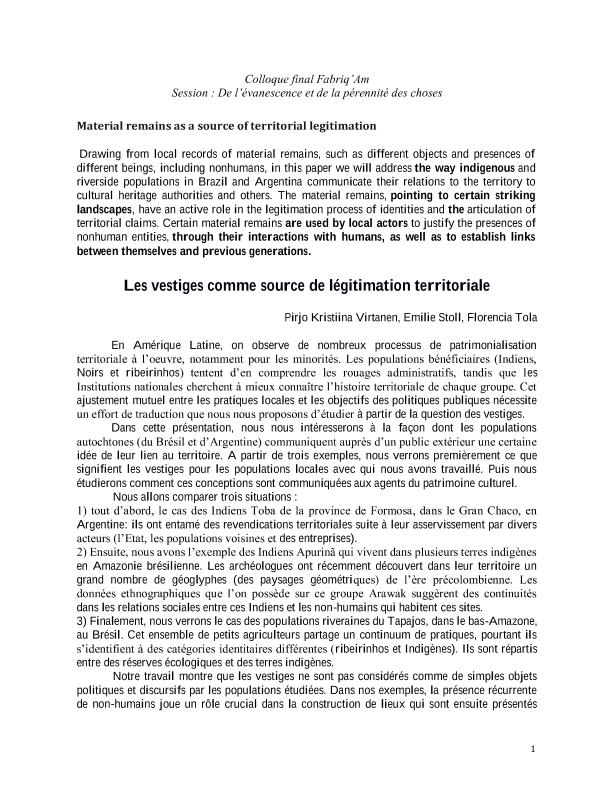Artículo
Drawing from local records of material remains, such as different objects and presences of different beings, including nonhumans, in this paper we will address the way indigenous and riverside populations in Brazil and Argentina communicate their relations to the territory to cultural heritage authorities and others. The material remains, pointing to certain striking landscapes, have an active role in the legitimation process of identities and the articulation of territorial claims. Certain material remains are used by local actors to justify the presences of nonhuman entities, through their interactions with humans, as well as to establish links between themselves and previous generations. Drawing from local records of material vestiges of the past, understood here in the broad sense of objects and traces of different presences including those of nonhumans, this paper addresses how indigenous and riverside populations in Brazil and Argentina communicate their relations with the territory to the cultural heritage authorities. The vestiges, which draw attention to specific landscapes, play an active role in legitimating identities and articulating territorial claims. Furthermore, some of them are used by local actors to provide evidence of the presence of nonhuman entities whose interactions with humans establish links with previous generations.
Les vestiges comme source de légitimation territoriale
Título:
Vestiges as a source of territorial legitimation
Fecha de publicación:
02/2017
Editorial:
ecole des hautes etudes en sciences sociales
Revista:
Nuevo Mundo Mundos Nuevos
ISSN:
1626-0252
Idioma:
Frances
Tipo de recurso:
Artículo publicado
Clasificación temática:
Resumen
Palabras clave:
Amazonia
,
Chaco
,
Territorio
,
Patrimonio
Archivos asociados
Licencia
Identificadores
Colecciones
Articulos(SEDE CENTRAL)
Articulos de SEDE CENTRAL
Articulos de SEDE CENTRAL
Citación
Virtanen, Pirjo Kristiina; Stoll, Emilie; Tola, Florencia Carmen; Les vestiges comme source de légitimation territoriale; ecole des hautes etudes en sciences sociales; Nuevo Mundo Mundos Nuevos; 2017; 3; 2-2017; 1-22
Compartir
Altmétricas




